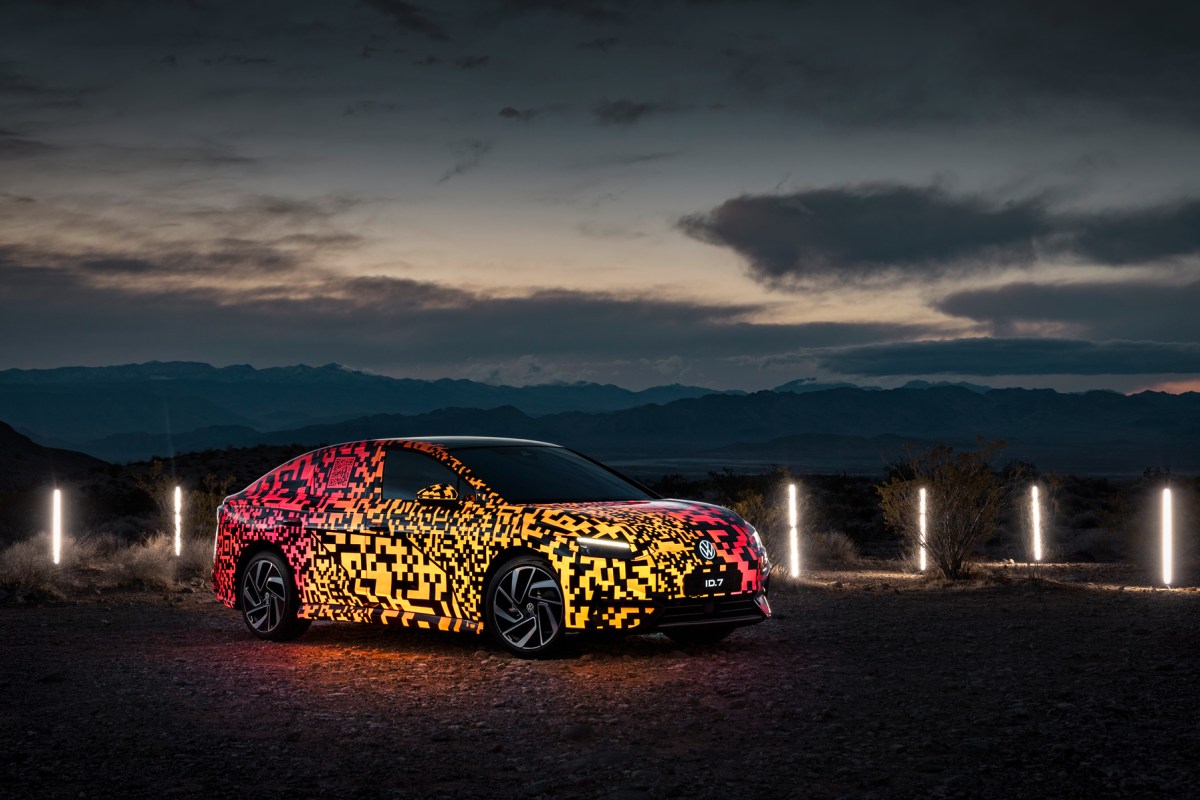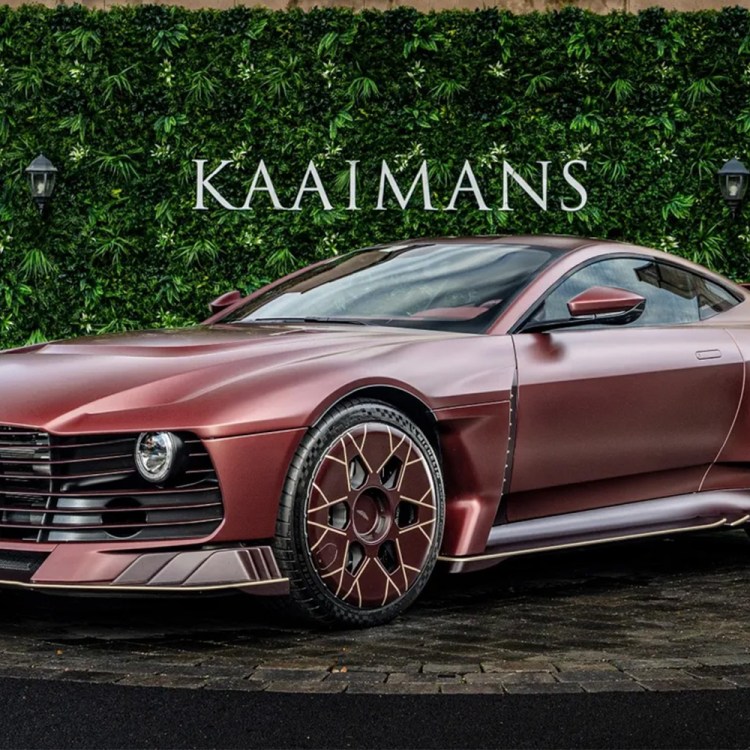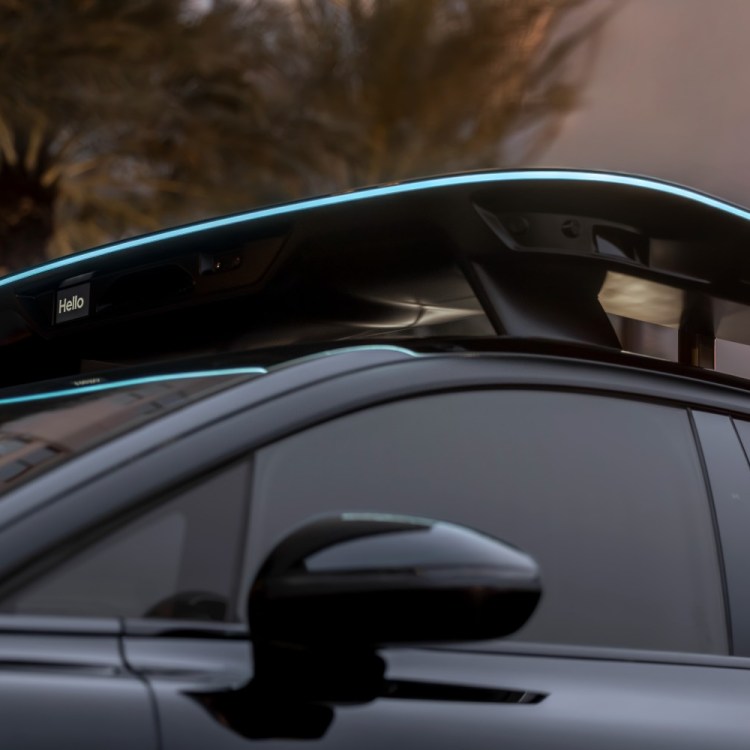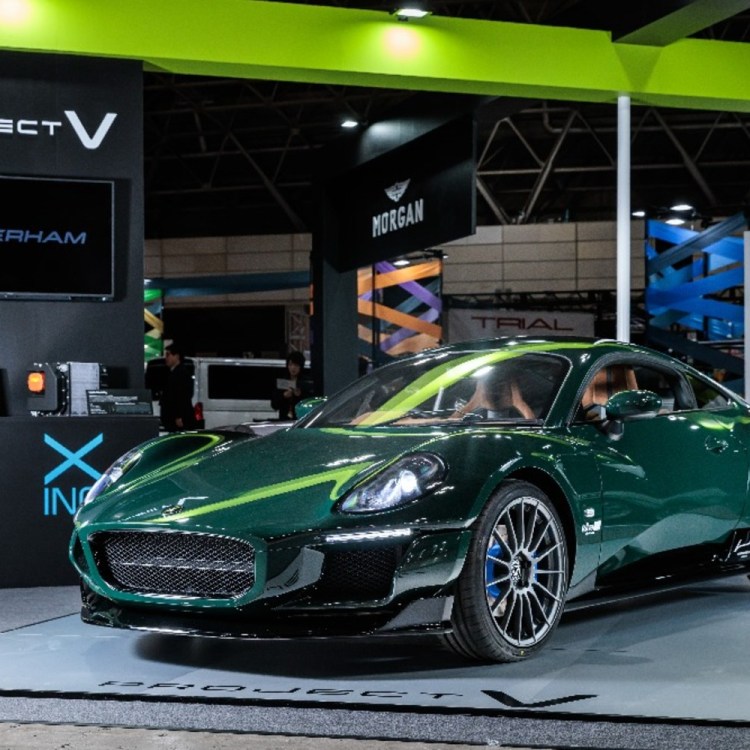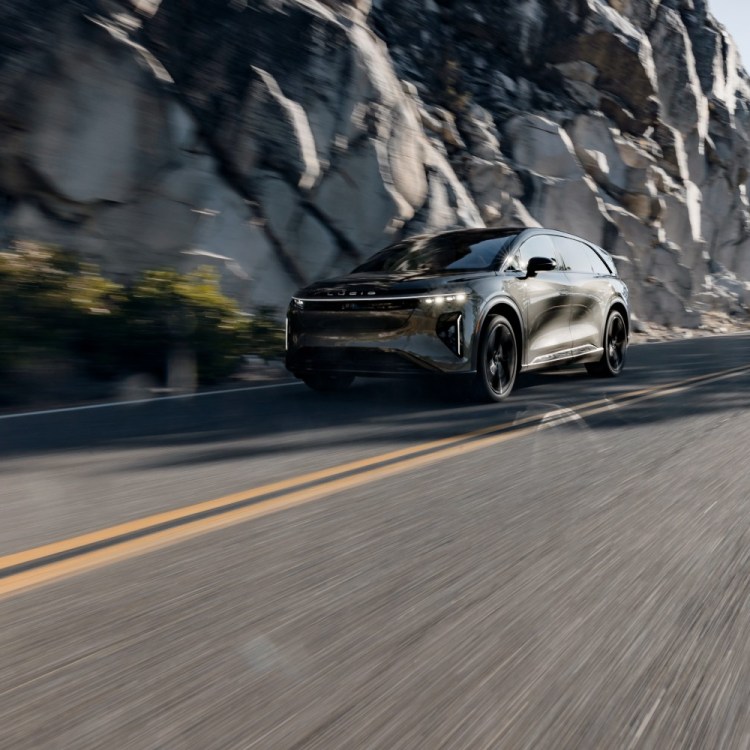On a brisk January night in Las Vegas on the eve of this year’s CES, a group of journalists gathered around a concept car at Volkswsgen’s outdoor pavilion. Volkswagen Passenger Cars CEO Thomas Schäfer took to the stage and said a few words about the vehicle before him — the ID.7, the latest entry in Volkswagen’s growing array of electric vehicles.
The sleek sedan was covered in a camouflage pattern that would look familiar to anyone who’s seen new and in-development vehicles slowly revealed to the world — a pattern of squares that gave the car a geometric look. Rather than the evenly-distributed pattern often seen on such cars and trucks, the pattern here veered into a surreal abstraction, looking at times like a QR code that had burst open like a high-tech dandelion.
It wasn’t until later in the show that the full breadth of this concept car’s exterior fully emerged. Over the course of CES, VW demonstrated an especially compelling feature — lighting incorporated as part of the body paint, which allowed the hood, doors and back of the car to light up in a series of patterns. And while the launch of the sedan is itself an impressive feat, it’s this technology that looked especially compelling.
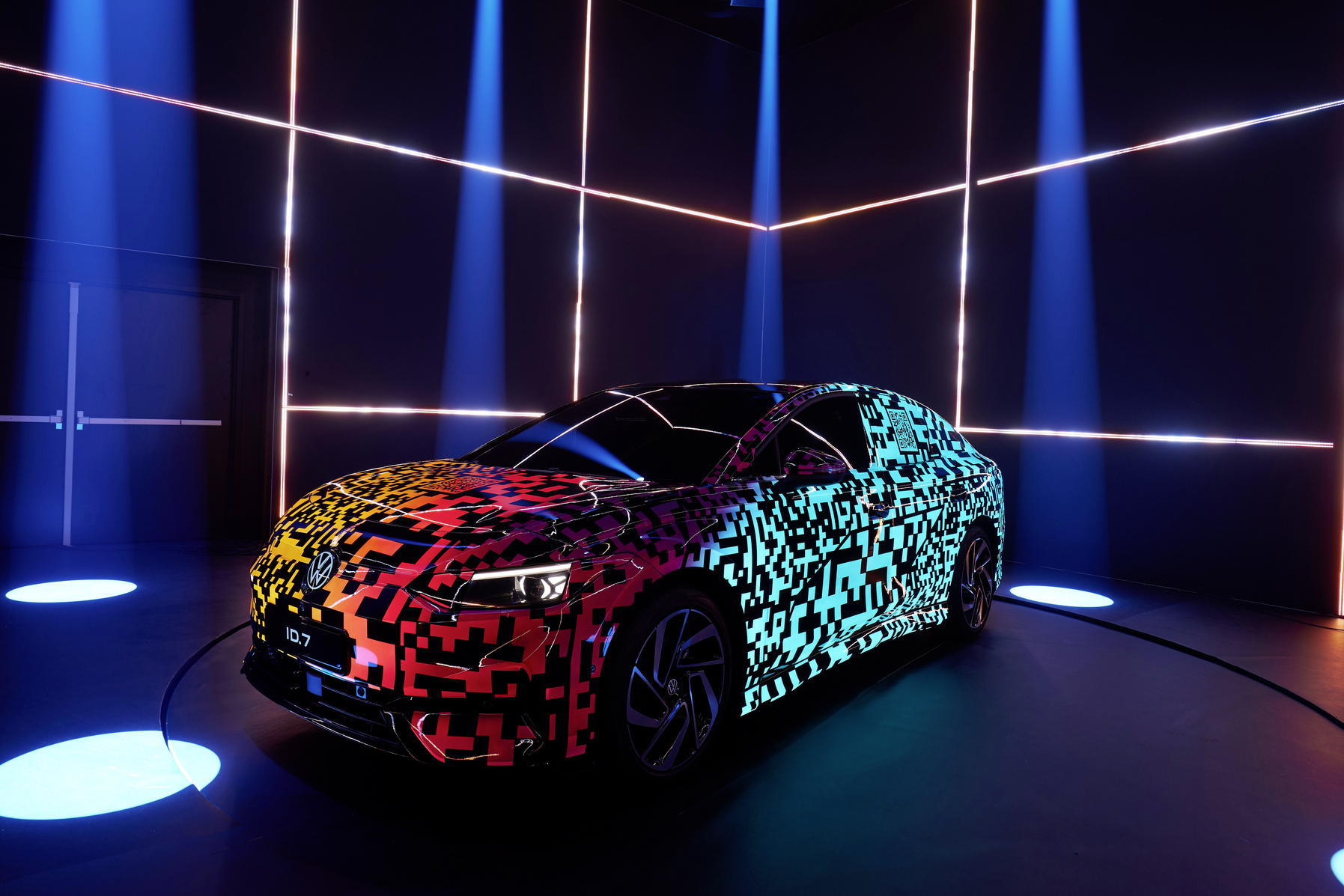
Cards on the table: I spent a lot of my formative years growing up in Volkswagens, due to the Golf and Passat my mom drove when I was in middle and high school. (“[Y]ou could say it’s an electric Passat, in a way,” Schäfer said of the ID.7 — but more on that conversation in a moment.) But that was a different time, automotively speaking, before SUVs dominated the driving landscape in the United States. All of which can make the automaker’s decision to work on an electric sedan seem counterintuitive — even taking into account the fact that the ID.7 will be sold in Europe and China as well.
In an interview with InsideHook, Schäfer made a convincing case for the enduring power of the sedan, pointing out that the class is “still a pretty big segment globally.” And he addressed another point where sedans have a leg up on their larger counterparts — namely, from an engineering perspective.
“One of the advantages of the sedan is aerodynamics,” Schäfer said. He went on to say that Volkswagen has historically been “a very strong sedan player” and that “that could be an advantage now with the competition — or the missing competition.”
Schäfer addressed the connections between the ID.7 and Volkswagen’s other models in the same series. “A good thing for us is that the MEB platform is so versatile that we can do anything from an ID.3 all the way up to the ID.7 now, from a small compact to a large full size sedan,” he said.
As befits the “7” part of ID.7, the sedan also includes some features that build on what the automaker learned from previous electric vehicles in the series. Schäfer spoke specifically about the car’s user interface. “This vehicle has a large 15-inch central display. That’s obviously the focus area,” he said — and went on to discuss the driver display, tactile materials and voice-activated controls within the car. And then there’s the matter of the interior heating and cooling system, which Schäfer was eager to talk about.
“All of the fans and everything are fully automatic,” he explained. “When you get close to the car, the vehicle recognizes the key and starts cooling down the vehicle before you even get in the car. It swings the fans in the right directions so that you get the most efficient way of getting cooled down or heated up.”
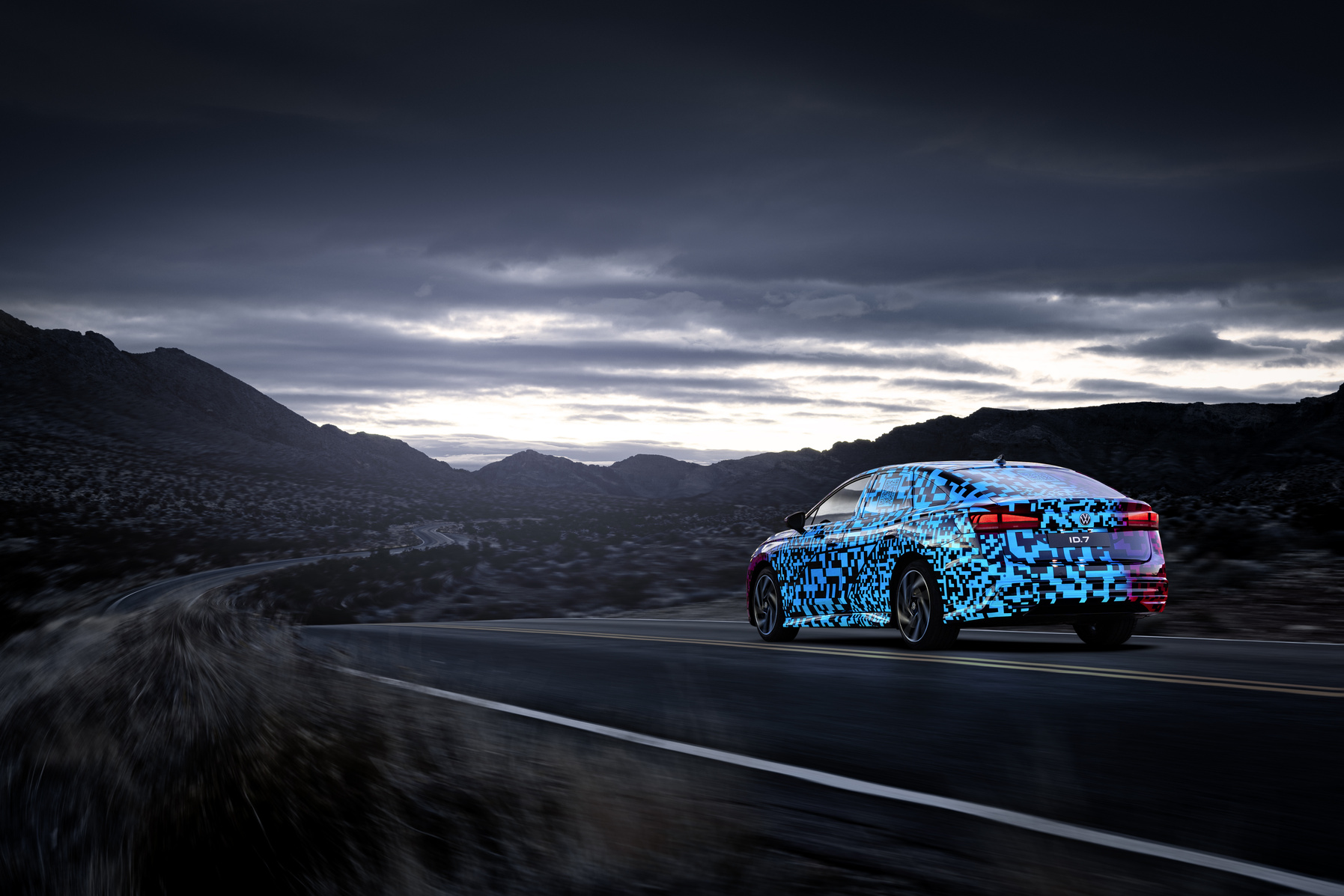
While the production version of the ID.7 won’t debut until the second half of this year, the concept car has other elements in its DNA that could make a mark on future Volkswagen models. Schäfer was eager to discuss both how the illuminated panels were put together and what that technology might be used for going forward.
“It’s 40 layers; some of the layers are conductive, some are not,” Schäfer said. “The way you can connect it to your pulse watch and it starts pulsing with your heart — it’s really cool stuff, and it’s experimental stuff.”
There are more practical aspects to this technology as well. “It would be easy to integrate it in the regular painting process,” said Schäfer. “And then, when you immediately step on the brake, then the back of the car can be completely illuminated, for example. If you have the indicator, on the left side, parts of a car could be illuminated.”
The automaker is currently looking into how this technology could be incorporated on the scale of mass production. It’s not hard to imagine this technology making for safer roads and more informed drivers on roads everywhere, in all seasons.
This article appeared in an InsideHook newsletter. Sign up for free to get more on travel, wellness, style, drinking, and culture.
